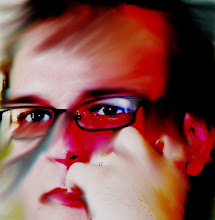The film is paced perfectly. It makes perfect sense why the decision was made to split “Deathly Hallows” into two films. “Deathly Hallows: Part 2” is so different from its predecessor that it really is in an entirely different genre.
From the opening Warner Brothers’ logo, it’s clear “Harry Potter and the Deathly Hallows: Part 2” was storyboarded and shot with 3D technology in mind. I have never seen a film use 3D to express so much of its theme and emotions of its characters the way this one does.
When “Deathly Hallows: Part 2” opens, dementors patrol the perimeters of Hogwarts, surrounding the school like smoke. Students trudge through the yard like inmates at a concentration camp or masses trapped in a “1984” dimension.
With those images, David Yates not only sets the tone of the film, but makes an immediate statement about the nature of totalitarianism: it’s simply the absence of joy.
The imagery of the Holocaust is so ingrained into our collective consciousness that films dealing with the most monstrous acts of the 20th century are emotionally devastating to begin with. It was an evil so incomprehensible, but so close and recent we can still taste it. Diagon Alley looks like the Warsaw ghetto.
But to say “Deathly Hallows: Part 2” uses these themes as an easy shortcut to elicit that tangible dread from us would be an injustice.
Once the tone of the film is set, the story kicks in and it stays in gear for the duration of the film. Daniel Radcliffe said in an interview that “Deathly Hallows: Part 2” starts as a heist film and evolves into a war movie.
That just about sums it up.
Without taking your hand and walking you through the story, there are just a few points to touch on.
 Ghosts of Goering, and Josef Mengele haunt the corridors of Hogwarts. When Harry, Ron and Hermione arrive at Hogwarts after months of chasing horcruxes, they are greeted by a visibly bruised and battered Neville Longbottom.
Ghosts of Goering, and Josef Mengele haunt the corridors of Hogwarts. When Harry, Ron and Hermione arrive at Hogwarts after months of chasing horcruxes, they are greeted by a visibly bruised and battered Neville Longbottom.As an avid fan of the books, I adore Neville Longbottom’s story arc and one of my complaints about the Harry Potter films was that he has been largely ignored. “Deathly Hallows Part 2” finally gives Neville’s character the justice he deserves.
Other Hogwarts students from earlier films are there too, emaciated and beaten down, but ready to fight for the hope Harry brings with him when he arrives at the school.
Cho, Seamus, Lee Jordan and others are gaunt, but assemble for battle nevertheless.
What follows is very heavy on effects, but basic-looking. Again, the 3D technology serves the story and characters rather than just being there for the sake of itself. The ghost of Helena Ravenclaw is enraged when she talks of the evil Voldemort has used her family’s property for and it’s a mix of Kelly Macdonald’s skill as an actress and the effects that convey that fury.
Even the battle sequences, with a couple of flashy exceptions, abandon the bright colors coming from magic wands as wizards duel. The fighting here, magical as it is, is vicious, to the point of bestial.
Oddly enough, the 3D technology and animated effects serve the stripped down look well.
From the moment the battle starts, there are shots of dead students littering the background.
Rowling and Yates refuse to shy away from horrors like the mass murder of children, even in a mainstream film like this. They don’t flinch as Hogwarts burns and people Harry love die.
Draco learns, as does Jeffrey Beaumont in David Lynch’s “Blue Velvet,” that evil is not glamorous. When its allure is stripped away, it comes down to human suffering. Evil is appealing, but you don’t see how it hurts until you’re sucked in. I don’t think most people understand the statement Rowling is making about the fashion of evil, the glamorization of monsters in our society.
Again, the point here is more than helped along through the use of animated effects. With each horcrux destroyed, Voldemort’s appearance actually changes. He looks frailer each time one is finished off.
Ultimately, when we see the soul of the Great Lord Voldemort, we are faced with a creature that elicits pity and revulsion in equal parts.
If you’ve read the book, you know what I’m talking about and if you haven’t, you’ll know what I’m talking about when you see it. It’s an animated creature brought to pathetic life better than my imagination did itself when reading the book. By the way, managing to pull off something sadder and more grotesque than something that’s already in my head is quite an accomplishment.
The film climaxes with a dizzying one-on-one duel between Harry and Voldemort (it’s an incredibly nice touch when Harry simply calls his enemy “Tom”) and features a couple of deaths you must see in 3D.
It feels like I’m biting off more than I can chew, talking about all these different components in one post, but when you sit down and see the joyless Hogwarts castle for the first time, you’ll see exactly what I mean when I talk about 3D technology and animated effects fusing perfectly together with a film’s theme, tone and character development.
And Professor McGonagall is worth the price of admission alone, because watching an old lady just throw down is awesome.





